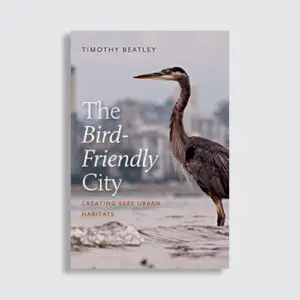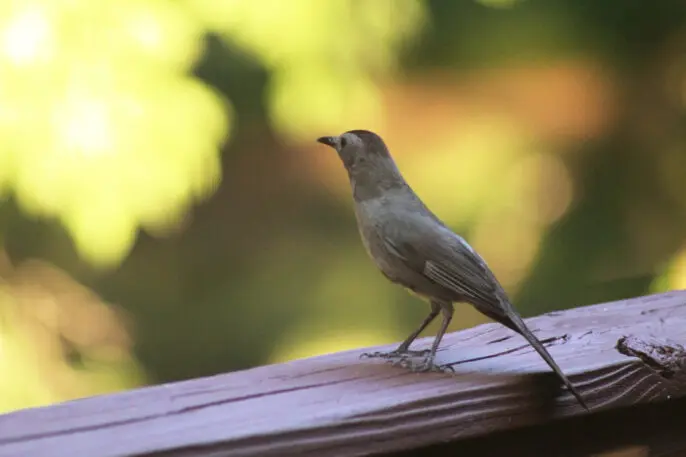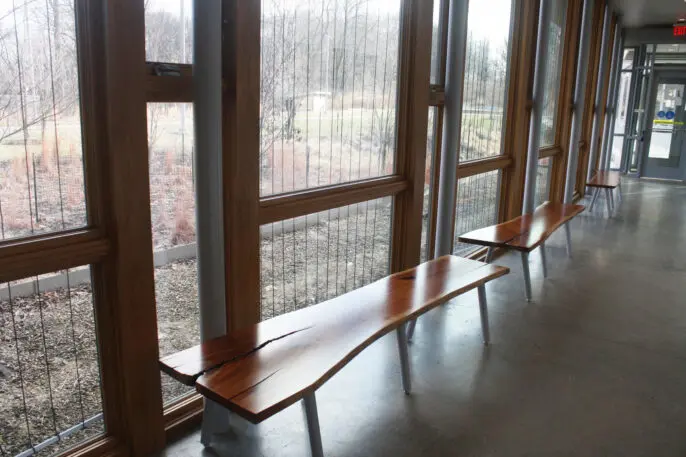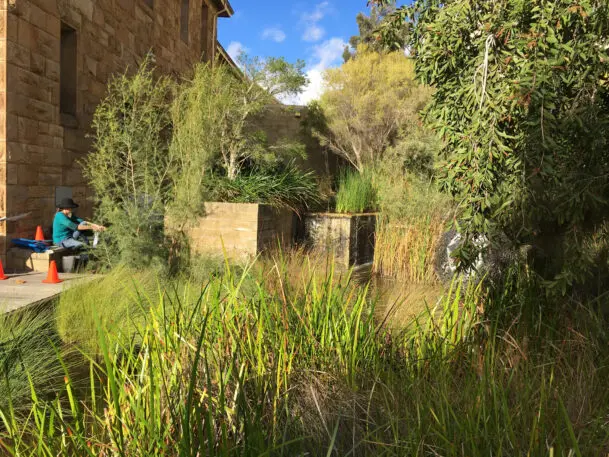Sometimes it seems like cities were designed to kill birds. Take for instance the single night in October when more than 1,000 birds were killed when they collided with buildings in the city of Philadelphia. Due to a combination of confusing reflections from building windows, disorienting light pollution, and the location of tall buildings in the direct flight paths and habitats of many birds, deadly collisions—sometimes in mass numbers—are depressingly common. Researchers estimate that collisions with buildings cause up to one billion bird deaths in the United States every year.

Beatley, a professor at the University of Virginia School of Architecture, has done extensive research into sustainable communities and urban planning, and in recent years, he has focused on the concept of biophilia, or how humans benefit from contact with the natural world. Better integrating nature into cities is good for people, but our buildings and cities aren’t always built in a way that’s good for nature. Here, Beatley reveals Fast Company how cities can be redesigned—by governments, architects, and regular people—to stop killing birds and start welcoming them into our lives.
Fast Company: Why do birds matter and why should cities be designed for them?
Timothy Beatley: Abundant bird life is the secret sauce for soul-nourishing cities. Birds matter tremendously, and their presence near to us in cities delivers delight and awe. It is hard to be lonely when birds are nearby. Our lives are richer, our days fuller, when we hear their magical voices of the fluttering energy and blur of color that birds provide. They make cities more interesting, infusing urban neighborhoods and spaces with a life force.

I think we are still grappling with a narrow view of nature and wildness, that this is remote and faraway and we must travel to find nature in some distant place. What we need to appreciate and connect with is the nature all around us, the nature near to where we live and work and spend most of our time.
Birds are an immense and magical life force on our planet, with inherent worth, and in this way not creatures that should require justification for their existence based on what they do for us. I resist that kind of thinking in favor of a more biocentric outlook, one that understands the need for cities that allow co-flourishing of birds and humans (and many other forms of life).
FC: You note that cities were often built in places that were already bird habitats. So it’s not birds that are in our cities, but our cities that are in birds’ habitats. Since we’ve intruded and don’t seem likely to leave, how can we make our cities better for the bird habitats we’ve overtaken?
TB: There are many things we can and must do to make our cities more bird-friendly. Perhaps the first step is to acknowledge they have the right to be here and we are duty-bound to do everything we can to ensure that urban environments are safe for them.
Beyond just reducing hazards we need to recognize that cities can be a positive force on behalf of birds, and for the conservation of biodiversity more generally. Cities can play a significant role and serve as an important counterbalance to the loss of habitat elsewhere. Every design and building project in the city should be seen as the chance to make room for other species of life, especially birds. Habitats that will be good for birds will be good for humans as well.
Our city planning must change to better take the movement of birds and other animals into account: Ecological networks and connectivity will be essential. Most city plans rarely mention birds or take them into account. I think that should change, and we should usher in the era of bird-centric planning. When we do what is necessary to accommodate and make room for birds, we support many other animals as well. Cities should follow the example of Vancouver preparing a bird strategy and appointing a standing Bird Committee. We need to give more explicit attention to the interests of birds in the governance and planning of cities.
Cities can also be a force for the conservation of essential and intact ecosystems essential for many bird species. Cities can join together to support the many migratory birds they share in common, working both to protect habitat at home but also the habitats and environments they will travel through or spend time in during their lifecycle.
I also like the trend of designing for birds and nature in new buildings and development projects, what has sometimes been called habitature. In the book I describe a housing development in the U.K. where the homes have built-in nesting cavities for common swifts.
Every new building or development should have to meet a minimum standard that requires a “net gain” in biodiversity. Examples of wonderful biophilic facilities like the Khoo Teck Puat Hospital in Singapore, which was conceived and designed from the beginning to compensate for the loss of tropical rain forest that would have existed on the site. Tracking the number of birds and butterflies over time, and displaying a running tally on a prominent wall, is one important way to understand how successful a building project is over time.
We also need to change the metrics by which we judge the success of our cities. Narrow economic indicators that emphasize short-term economic consumption or material wealth should be replaced or at least balanced against measures of human and economic health—perhaps a city should monitor and aspire to a condition where all residents live in neighborhoods where the songs of native birds can be heard? Might that be a better measure of progress?


There are definitely some obstacles to overcome. One frequently mentioned objection is the additional cost of bird-safe glass. These additional costs are modest and often overstated, and small as a percentage of the cost of new construction. And they are often counterbalanced by other benefits—savings from reduced energy consumption and lower carbon emitted. The retrofit of the Jacob Javits Center in New York is a good example—the glass, which is fritted, or covered in tiny dots, has reduced bird mortality by more than 90% and also reduced energy consumption by 26%.
Another obstacle has been the failure of the architectural and design community to consider impacts on birds. Architects have been too enamored with expansive glass designs. That is changing, and we are seeing some remarkable new designs that are creative and beautiful and uplifting, adding immensely to the aesthetic experience of cities, but that are also bird-safe. Examples include Jeanne Gang’s Aqua Tower and the Snøhetta-designed Ryerson Student Center in Toronto, among many others. We are also not training adequately (or at all) the next generation of architects and designers to think about birds.
There are deeper obstacles also, notably how little importance birds seem to have in the political process. There is often little political leadership or support for steps needed to make cities safer and more accommodating for birds. Birds don’t vote, of course, and depend on others (bird lovers) to exert influence and demand better protection. I don’t think elected officials fully appreciate how much their constituents care about and love birds. It may be easier to make the case for bird safety post-pandemic, as so many of us have been enjoying watching and listening to birds, and have been comforted by their beauty and resilience and constancy in these especially stressful times.
In the end, it is for me really a matter of ethics. Architects, builders, elected officials, and others must recognize an ethical duty of care to protect birds and to minimize their pain and suffering. If this happens many things will change, and cities will see the adoption of bird-safe building standards as a moral imperative on a par with efforts to protect human health and safety.
FC: It’s not just architects and city planners that have a role in redesigning the urban environment to be more bird-friendly, but also regular city dwellers. Can you explain the importance of “catio” design?
TB: “Catios” are cat-patios, or screened-in structures, usually connected to a home, that permit a pet cat to have the experience of being outside but prevent them from hunting and killing birds. It is a very interesting idea that has been pioneered in Portland, Oregon, but gaining hold in other cities now as well. We visited and filmed one of the annual “catio tours” that takes place in Portland, a partnership between Portland Audubon and the Feral Cat Coalition of Oregon. It is a great example of how bird-lovers and cat-lovers can find common ground.

There are so many ways that we can work to expand knowledge about and appreciation of birds in the community. Organize or co-organize some neighborhood bird-watching walks. Advocate for more bird programming in local schools.
Recognize your brand’s excellence by applying to this year’s Brands That Matter Awards before the early-rate deadline, May 3.
